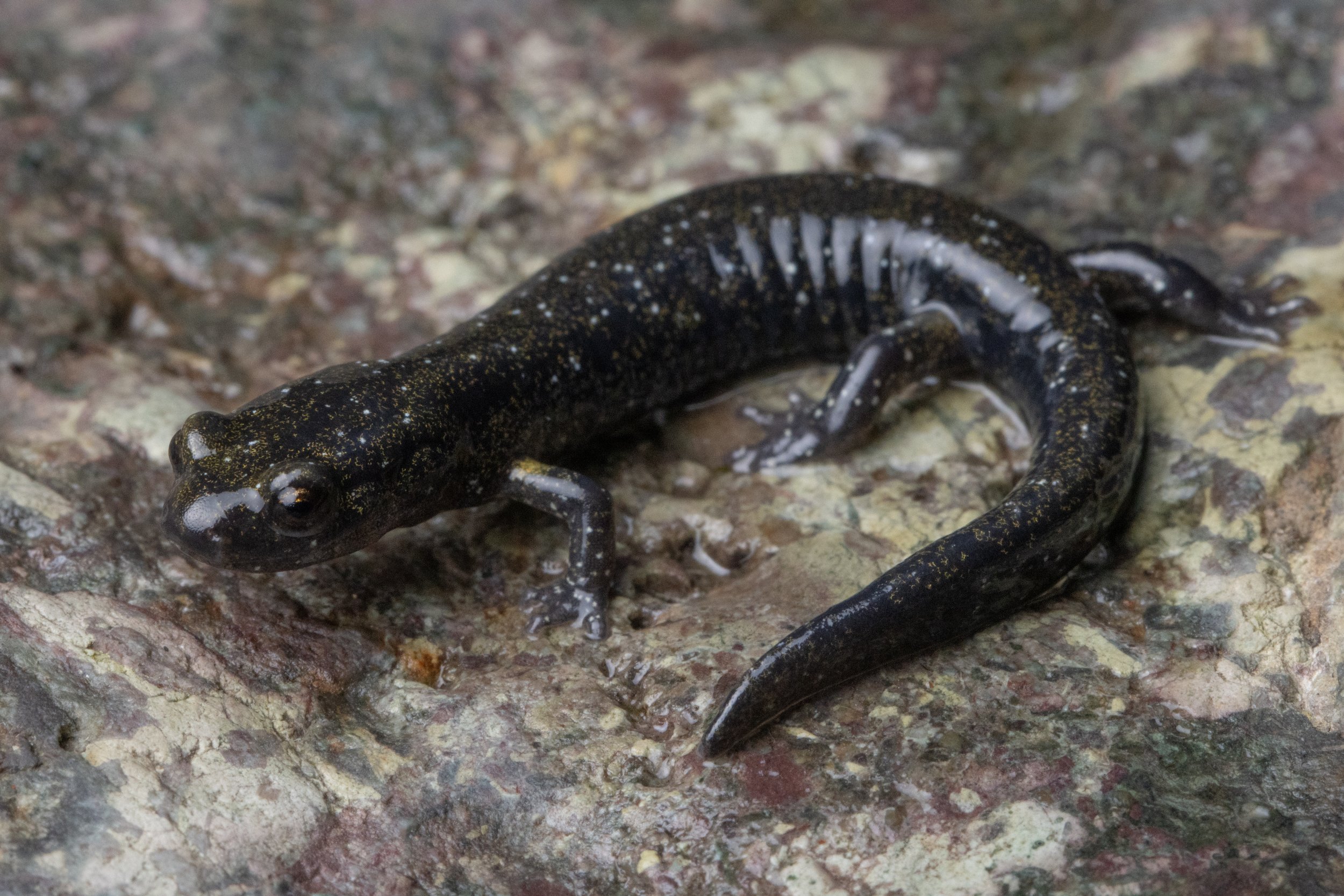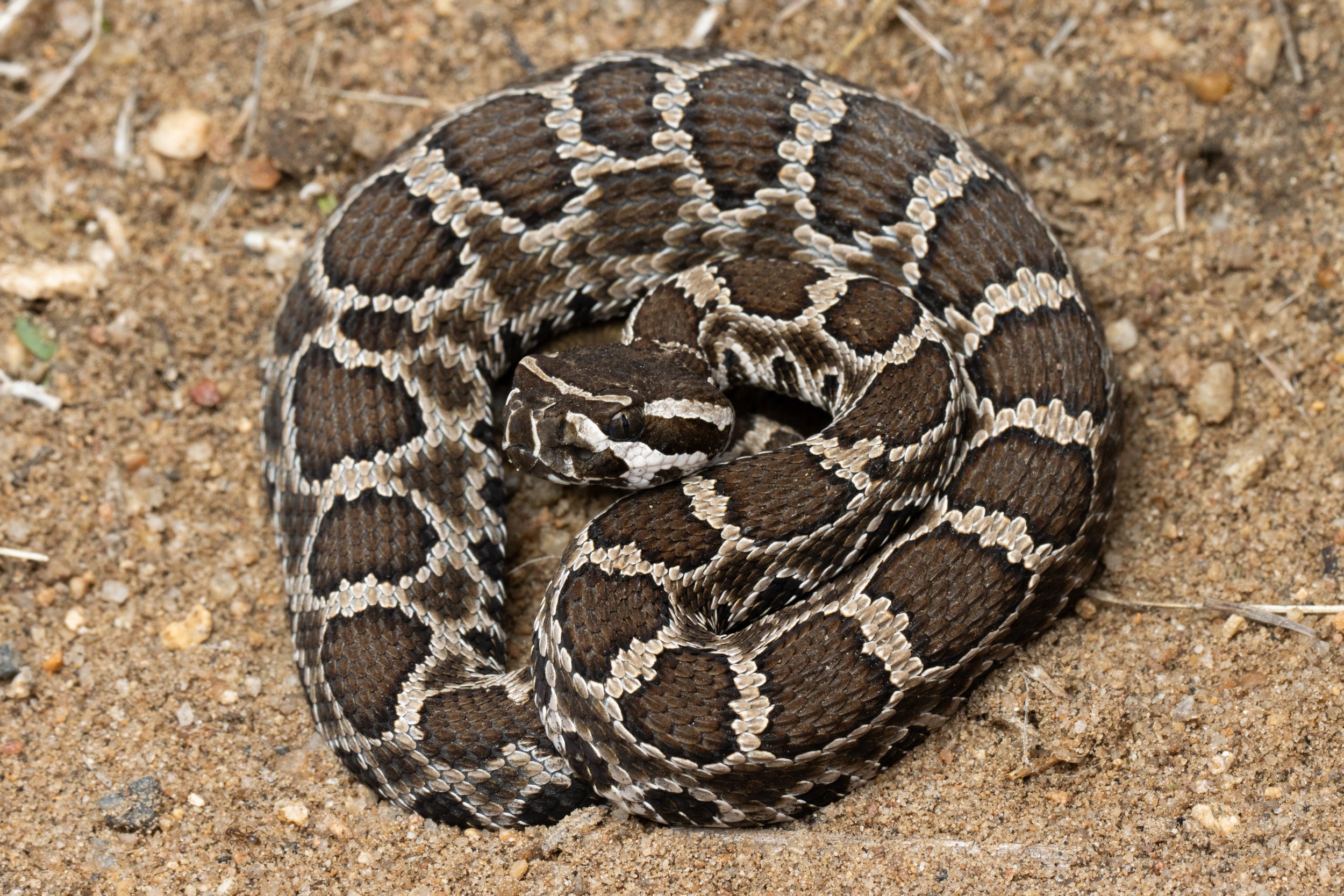Despite unusually dry winter conditions, I decided to take my first trip into California to search for some iconic salamander species. Unsurprisingly the salamander hunting was slow-going, but I still managed to turn up a handful of iconic species.
Southern alligator lizard (Elgaria multicarinata)
California 2025
Trip #1
Santa Cruz black salamander (Aneides niger)
California giant salamander (Dicamptodon ensatus)
Batrachoseps attenuatus
Ensatina (Ensatina eschscholtzii)
California newt (Taricha torosa)
Batrachoseps gavilanensis
Rough-skinned newt (Taricha granulosa)
Marching along with determination, newts of the genus Taricha, take advantage of seasonally available groundwater to take their shot at love. A well timed foray into the forest can allow you to see these spectacular caudates in what seems to be perpetual motion.
My initial love for amphibians began with newts. I developed a particular fascination for the eastern newt (Notophthalamus viridescens), a familiar sight for residents of the northeast. My father and I used to get out early in the morning to observe the regular and busy activity of these diminutive newts.
Years later, I found myself in a strikingly similar scenario- wandering through a damp forest to observe the activities of newts. But this time, I was far from the east coast woods of my childhood. Watching these newts move confidently through the forest, I was reminded of those early mornings with my father. This experience was filled with both the excitement of discovery and nostalgia.
Batrachoseps luciae
Red-bellied newt (Taricha rivularis)
Limestone salamander (Hydromantes brunus)
Sierra newt (Taricha sierrae)
Limestone salamander (Hydromantes brunus)
Southern pacific rattlesnake (Crotalus oreganus helleri)
Batrachoseps major
Trip #2
After taking an underwhelming second trip to California, I knew I needed to return to look for several missed targets. Warm weather and some spring rains ushered Nick and I back. Only this time, we decided to head to the high desert to look for an exciting locale of boas. Nick and I were joined by Steve, a new resident of the area- who was also so kind as to have us stay with him for the weekend. The surrounding scenery of the area was overwhelmingly beautiful. Snow capped peaks loomed in the background of the vibrant chaparrell valleys that we explored.
Trip #3
Views of the mojave desert from 4000 ft elevation
Rock outcrop with a diversity of unique plant forms. Beavertail prickly pear (Opuntia basilaris), Panamint liveforever (Dudleya saxosa) and Engleman’s hedgehog cactus (Echinocereus engelmannii)
To our surprise, the first boa of the day came really easily. We didn’t make it far down into the valley before deciding that the terrain was too demanding for my vehicle. Before turning around to get out of the valley, we jumped out of the car to flip some roadside rocks and within a few short minutes, I flipped the first boa, a vibrantly colored juvenile. Needless to say, energy levels were through the roof and we were all stoked to have struck gold so early in the day. This individual marked my first observation of a boa in the US.
Coastal rosy boa (Lichanura orcutti)
Eastern coachwhip (Masticophis flagellum)
Speckled rattlesnake (Crotalus pyrrhus)
To solidify what was already an amazing day… We found another large adult rosy boa crossing a trail as the sun started to sink behind the mountains. Also, we took a jab at one last target: the red diamond rattlesnake. Steve came up big time and spotted a beautiful red diamond rattlesnake basking on a steep hillside adjacent to what was likely its winter hibernacula. It seemed like we just couldn’t fail this day. For this reason, we decided to attempt some ambitious targets the next day in Arizona.
Desert nightsnake (Hypsiglena chlorophea)
Coastal rosy boa (Lichanura orcutti)
Flipping rocks proved to be incredibly productive. Our continued success curbed our initial concerns about the cool weather we had for the weekend. The Mojave desert was very kind to us. Nick ended up flipping another large and striking adult rosy boa as well as a very vibrant speckled rattlesnake.
Coastal rosy boa (Lichanura orcutti)
Tha Kemster
Coastal rosy boa (Lichanura orcutti)
Red diamond rattlesnake (Crotalus ruber)
Ben and Graham flew out to Phoenix halfway through April with the intentions of joining me for some fun in Arizona. As we continued to track the weather forecast, we decided that our chances of success in Arizona were rather bleak so we pivoted our plans and headed for California instead. We knew we would have to position ourselves well for the following day since the weather appeared to be as good as it was going to be for the next few days. We were very optimistic about the next day and could hardly sleep before heading up the mountain. Getting an early start on the day, we began flipping a bunch of rock piles in search of rubber boas and mountain king snakes.
This photo captures the frantic euphoria that we experienced. Four mountain king snakes in quick succession and trying to find Ben.
Mountain king snake #5
Trip #4
Early on in the day, Graham flipped our first southern rubber boa. He only managed to get a glance of the snake before it promptly disappeared down a hole. We were bummed out but knew we still had plenty of time in the day to get our revenge. When we were headed back to the car, I decided to scout out a rather inconspicuous rock pile at the top of an unpromising peak. Much to my surprise, we ended up finding multiple mountain king snakes!
Coast mountain kingsnake (Lampropeltis multifasciata)
Mountain kingsnake and southern rubber boa habitat
Mountain king snake #6
Rubber boa
Overnight temperatures sunk down way into the low 40s. We were concerned about our prospects of finding snakes the next day. Chasing the excitement we had the day prior, we decided to go back up into the mountains despite temperatures only reading in the upper 40s. We didn’t have much confidence in the operation at this point but we started flipping some snakes shortly after getting into habitat and our doubts were extinguished. Ben flipped the nicest mountain king snake we had found thus far.
On the third day of the trip we found a few more lifers for Graham and Ben. Despite exceptionally cold and rainy temperatures, we found a southern pacific rattlesnake and a red diamond rattlesnake coexisting on a rocky hillside. Additionally, we were able to turn up a two-striped garter snake. Our success began to slow down towards the end of the trip. There wasn’t much else to show for the last day of the trip. This trip was four days of stupid jokes, dirt-cheap motels, surprise and excitement.
























































